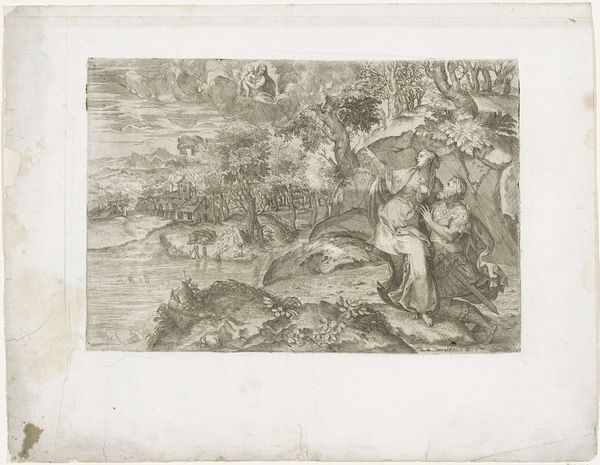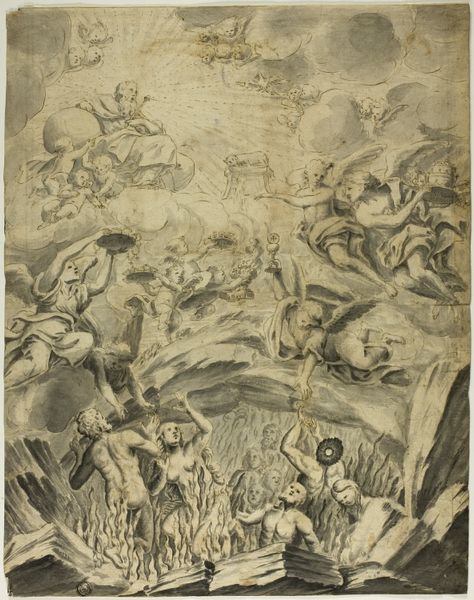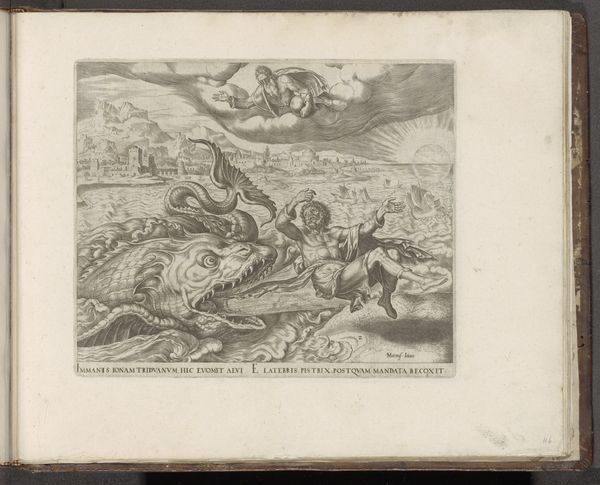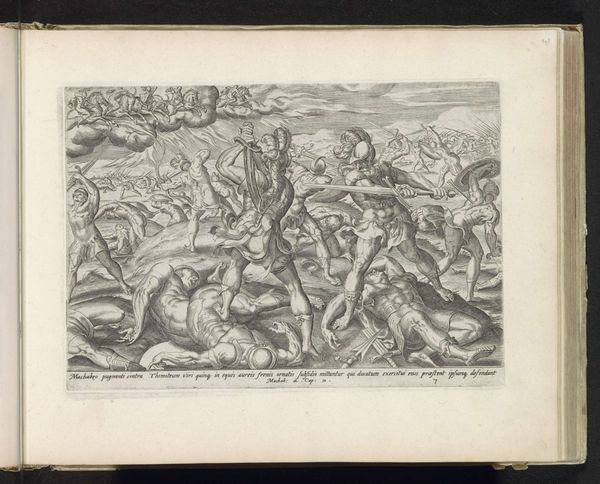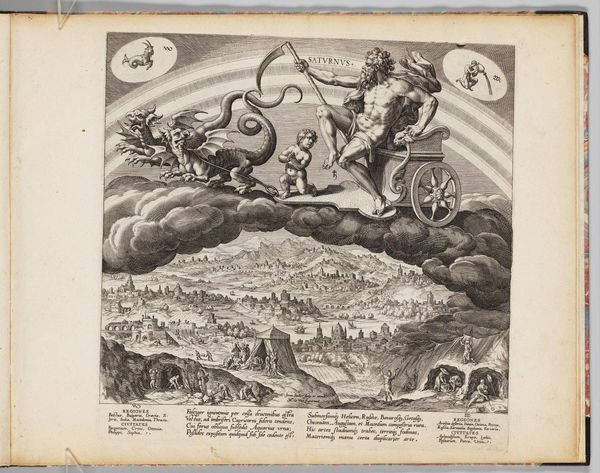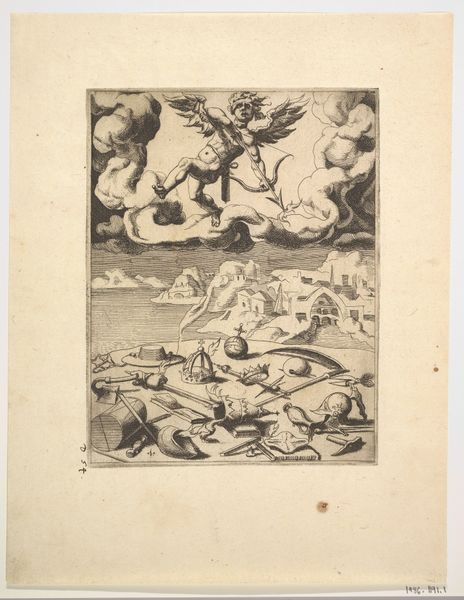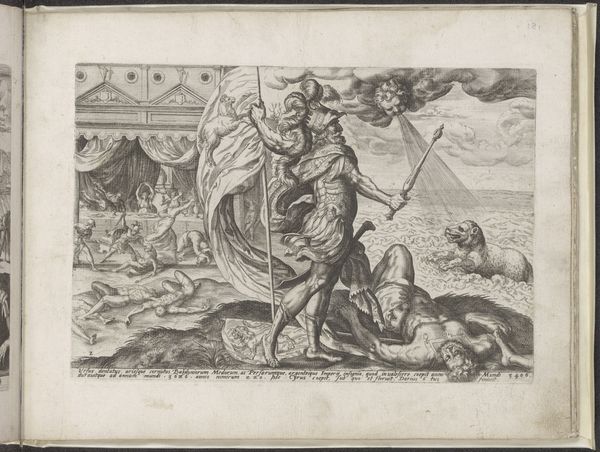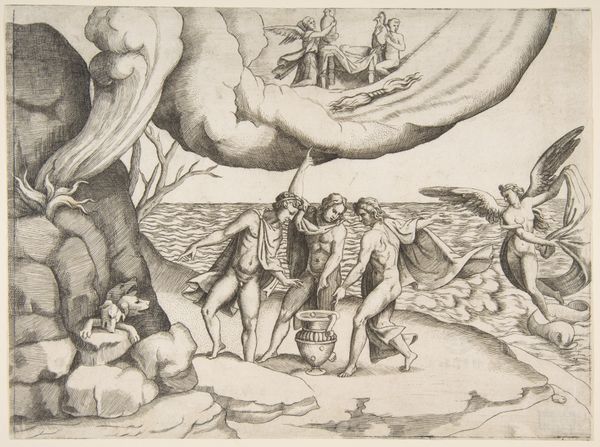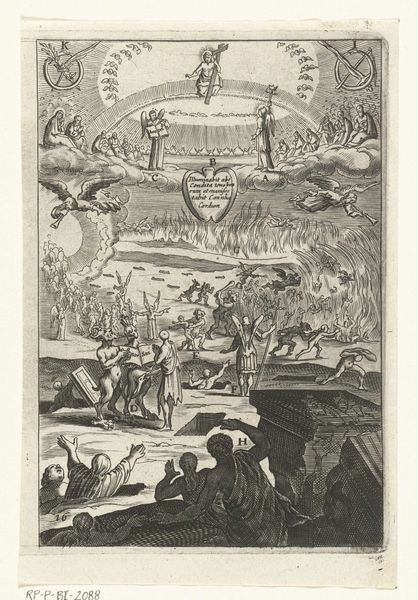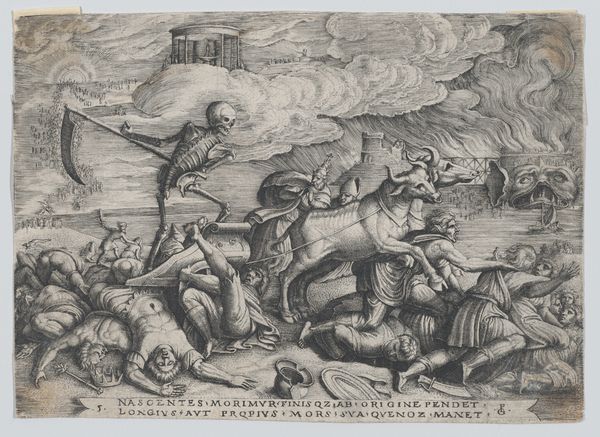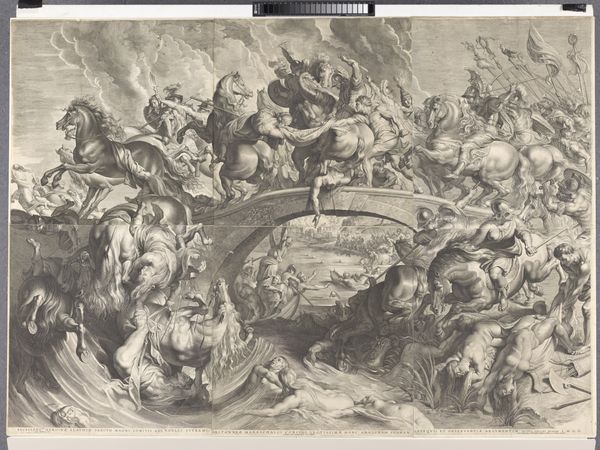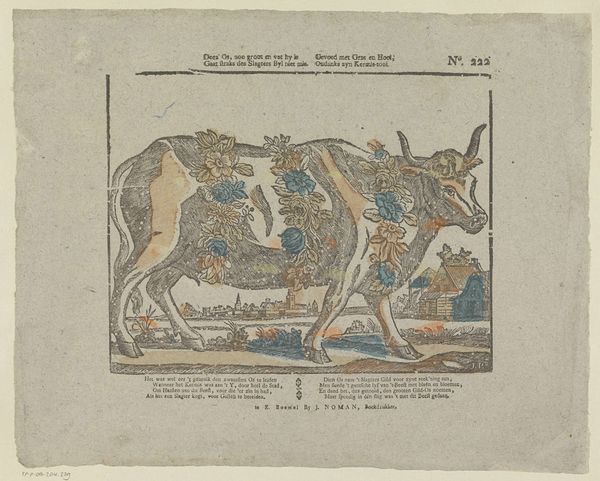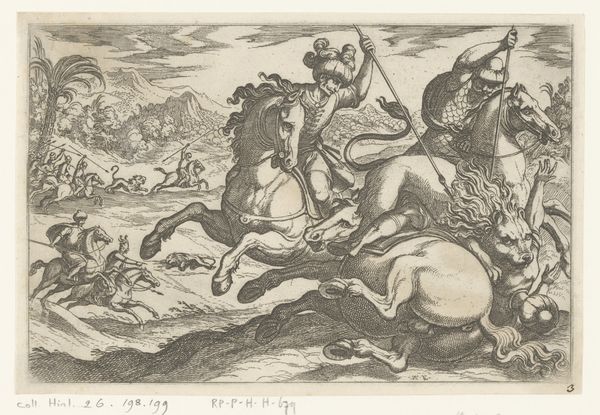
print, engraving
#
narrative-art
#
ink painting
# print
#
mannerism
#
figuration
#
history-painting
#
engraving
Dimensions: height 385 mm, width 510 mm
Copyright: Rijks Museum: Open Domain
Giulio Sanuto created this print, *Perseus and Andromeda*, sometime between 1540 and 1588. During this period, mythological narratives were often used to reflect societal values and power dynamics. Here, Andromeda is chained to a rock, a vulnerable figure awaiting her fate. Sanuto presents us with a chained woman, exposed, as if to the male gaze. The story of Andromeda, a princess punished for her mother's hubris, becomes a spectacle of female suffering and male heroism. Perseus descends from the sky to rescue her, sword in hand, embodying the archetype of the courageous hero. It’s worth considering the story’s implications: a woman’s suffering as a consequence of another woman’s actions, a male savior intervening to restore order. The story is not just about rescue, but about power, gender, and the narratives we construct around them. It asks us to think about how stories shape our understanding of ourselves and the world.
Comments
rijksmuseum over 2 years ago
⋮
Zobel was very partial to the work of Giulio Sanuto. He had at least six prints by this Venetian printmaker in his album, including this large engraving after a design by the famous Venetian painter Titian. We see the nude princess Andromeda chained to a rock, a human sacrifice for a ferocious sea monster. She is rescued by the hero Perseus who flies down, headlong, to attack the creature.
Join the conversation
Join millions of artists and users on Artera today and experience the ultimate creative platform.
